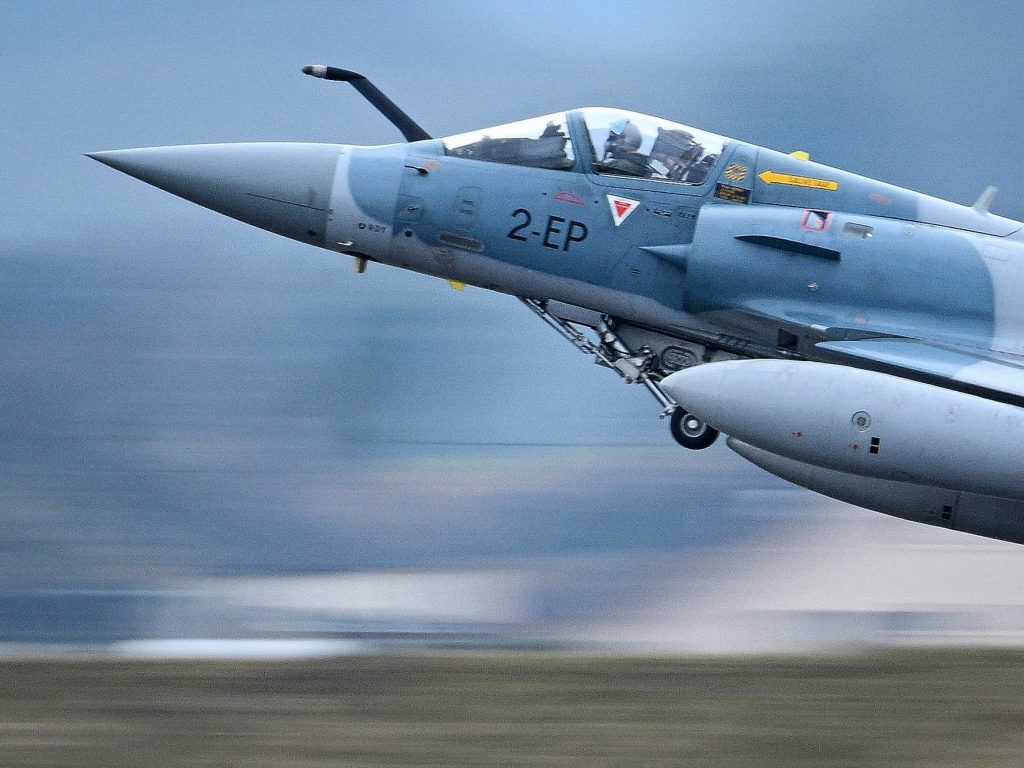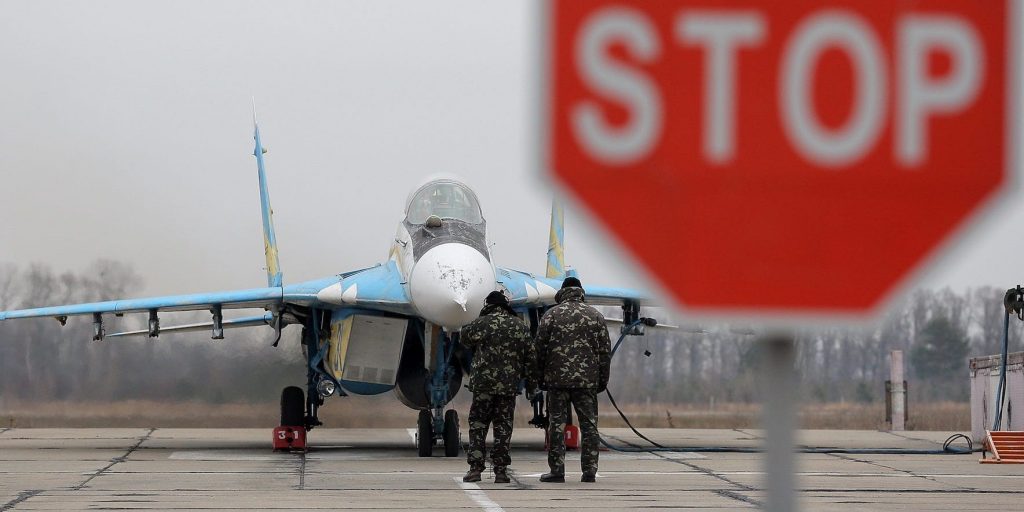- This week, Ukraine's President Zelenskyy renewed calls for a no-fly zone over Ukraine.
- The US and NATO strongly oppose a no-fly zone because it would involve shooting down Russian aircraft.
- Experts say a no-fly zone would not be effective in targeting the bulk of Russia's firepower anyway.
Ukrainian President Volodymyr Zelenskyy has asked the United States and its allies for a no-fly zone as the Russians barrage his cities, killing scores of civilian in shelters and striking hospitals to treat the wounded.
"Russia has turned the Ukrainian sky into a source of death for thousands of people," Zelenskyy said. "You know how much depends on the battlefield on the ability to use aircraft — powerful, strong aviation — to protect our people, our freedom, our land. Aircraft that can help Ukraine, help Europe."
NATO and the US say this is a non-starter as a no-fly zone would require the nuclear-armed alliance to shoot down Russian warplanes, an act which Russia would most certainly take as an act of war.
And experts point out that Russia is mostly relying on ground-based weapons to shatter Ukrainian cities, as some of its air forces avoid Ukrainian airspace out of concern for being shot-down by Ukraine. Russia instead has used weapons like its truck-mounted Grad rockets near Kyiv and against Kharkiv.
Russian President Vladimir Putin has said that a declaration of a no-fly zone by any third party would be taken as "participation in the armed conflict.," according to a report from the AP.
What is a no-fly zone?
No-fly zones prohibit all or certain types of aircraft from being flown through a designated airspace — in this case Ukraine — whose effectiveness depends on the air forces' willingness to enforce them.
In the case of a no-fly zone over Ukraine, support from NATO or one of its 30 members would require identifications of all incoming aircraft and sending out fighters to intercept aircraft that do not comply, with the possibility they may be forced to shoot it down.
No-fly zones instituted by the US in the past have required constant air patrolling and monitoring. President Joe Biden and the White House have repeatedly said the US would not send troops to Ukraine including to support a no-fly zone there, and have been avoiding Ukrainian airspace since Russia attacked.
"It would require, essentially, the U.S. military shooting down Russian planes and causing a potential direct war with Russia — something we want to avoid," White House press secretary Jen Psaki has said.
Russia and the US have the world's largest arsenals of nuclear weapons, and there's deep worry a conflict between them runs a small but not insignificant risk of leading to nuclear war.
The most recent use of a no-fly zone supported by NATO was in Libya during the country's first civil war in 2011.
In a poll of 866 international relations scholars, experts were nearly unanimous in their opposition to establishing a no-fly zone. The Teaching, Research, and International Policy (TRIP) Project at William & Mary's Global Research Institute found that hese experts were more likely to support the US deploy forces to Eastern Europe, as it is currently doing; these forces are remaining outside Ukraine.
The TRIP Project's poll found that experts worry a no-fly zone would substantially increase the likelihood of Russia mounting a nuclear attack against Ukraine or NATO countries.

Why wouldn't a no-fly zone be effective in Ukraine?
So far, the war in Ukraine has not relied heavily on air power on either side. Russia has largely used long-range missiles and artillery fire to attack Ukraine's forces and the Ukrainians have responded largely with ground fire.
In fact, US defense officials believe Russia's jets may be deliberately avoiding Ukrainian airspace while they fly nearly 200 sorties per day. Researchers estimate that Russia has lost at least 13 aircraft in the war as of March 17.
During a background briefing with reporters, a senior US defense official said the Pentagon assesses that some Russian jets never enter Ukraine's air space. Instead, the Russians are able to fire aerial-mounted cruise missiles at Ukraine from planes on the Russian side of the border, as is believed to have been the case with the attack on a training center close to the Polish border that killed at least 35.
This could be because in the first days of the war in Ukraine, researchers found that Russia lost a number of combat jets to Ukraine's air defenses.
As one official noted, this means a no-fly zone in Ukraine would not stop these kids of attacks because the attacks were fired from bombers in Russian airspace using long range cruise missles.
Justin Bronk, an aerial-combat expert at the Royal United Services Institute, said establishing a no-fly zone would be "largely ineffective in halting the brutal ongoing bombardments of Ukrainian cities."
A no-fly zone in Ukraine would not be effective in targeting Russia's multi-launch rocket-artillery systems, cruise missiles, ballistic missiles or conventional artillery which Russia has relied on in its assault on Ukraine, according to Bronk. It would also expose NATO aircraft to the possibility of being shot down by Russia's surface-to-air missiles, an act that could lead to escalation between the nuclear-armed powers.
